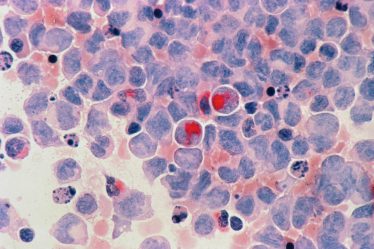
Osmosis is a key biological principle helping cells survive and work properly. It’s a vital process that lets cells keep a steady inner environment and do well in different conditions. This article will explain osmosis, why it’s essential for cells, and how it affects living things and ecosystems. By the end, you’ll understand this vital biological process much better. You should take a biology class or get a biology tutor to better understand osmosis.
Interested in exciting experiments you can do at home? Visit our blog post “8 Fun Science Experiments for Kids”.
Introduction to Osmosis for Beginners
Before diving into the specifics, it’s essential to learn osmosis definition and how it works at a basic level. In the simplest terms, osmosis is the movement of water or solvent molecules across a selectively permeable membrane, such as the cell membrane, from a region of low solute concentration to a region of high solute concentration. This process occurs until an equilibrium is reached between the two regions. Understanding the basics of osmosis sets the foundation for exploring its more complex applications, such as its role in the cellular exchange and its impact on living organisms and ecosystems.
As you continue reading, keep in mind the most important topics in osmosis: what are osmosis and diffusion, why osmosis is important to the survival of a cell, examples of osmosis, and osmosis in cells. If you can understand these points, you will understand osmosis.
The Process of Osmosis in Cells
Osmosis is an essential process in cells, ensuring their survival and proper functioning. To understand osmosis in cells, it’s important to consider the cell membrane, a selectively permeable barrier separating the cell’s interior from its surrounding environment. This unique property of the cell membrane allows specific molecules and ions to pass through while preventing others from entering or leaving the cell.
One of the most critical tasks of the cell membrane is to regulate the movement of water and solute molecules, ensuring a stable internal environment. Osmosis is the primary mechanism through which cells achieve this balance. When the solute concentration inside the cell differs from the surrounding environment, water molecules move across the cell membrane through osmosis, entering or leaving the cell to equalize the concentrations.
Types of solutions: isotonic, hypotonic, and hypertonic
This movement of water molecules can result in three different types of solutions: isotonic, hypotonic, and hypertonic. In an isotonic solution, the solute concentration inside and outside the cell is equal, resulting in no net movement of water molecules. Conversely, a hypotonic solution has a lower solute concentration outside the cell, causing water to enter the cell and potentially resulting in cell swelling or bursting. Lastly, a hypertonic solution has a higher solute concentration outside the cell, leading to water leaving the cell and potentially resulting in cell shrinkage or shriveling.
Find a biology teacher or a biology tutor to learn more about the process of osmosis. Check out good tutoring sites by typing “biology tutor Glasgow” or “biology teacher Sheffield” in your search engine. You can also join a biology class at a nearby school or take online biology lessons. Search for “biology classes London” or “biology lessons Manchester” online.
Don’t forget to read our blog post on the importance of biology tutors: “Unlocking the Wonders of Biology: How a Tutor Can Make Science Fun for Kids”.
Important osmosis terms and definitions prepared by our qualified tutors
- Osmosis: The movement of water or solvent molecules across a selectively permeable membrane from a region of low solute concentration to a region of high solute concentration until equilibrium is reached.
- Cell Membrane: A selectively permeable barrier that separates the cell’s interior from its surrounding environment, regulating the movement of molecules.
- Equilibrium: A state of balance in which the concentration of molecules is equal across different regions.
- Diffusion: The passive movement of molecules from a region of high concentration to a region of low concentration until an even distribution is achieved.
- Solute: A substance that is dissolved in a solvent, forming a solution.
- Isotonic Solution: A solution in which the solute concentration inside and outside the cell is equal, resulting in no net movement of water molecules.
- Hypotonic Solution: A solution with a lower solute concentration outside the cell, causing water to enter the cell and potentially resulting in cell swelling or bursting.
- Hypertonic Solution: A solution with a higher solute concentration outside the cell, leading to water leaving the cell and potentially resulting in cell shrinkage or shriveling.
- Facilitated Diffusion: A process that allows certain molecules and ions to move across the cell membrane, following their concentration gradients, with the help of specific protein channels and carrier proteins.
Having difficulty understanding osmosis? Let a biology tutor help you.
Why is osmosis important to the survival of a cell?
Now that you have a basic understanding of osmosis and how it occurs in cells, you might wonder, “Why is osmosis important to the survival of a cell?” The answer lies in the delicate balance of the cell’s internal environment, crucial for maintaining cellular function and overall cell health. Osmosis plays a vital role in achieving this balance by regulating the movement of water molecules across the cell membrane, ensuring that cells maintain an appropriate size and shape.
One of the primary reasons osmosis is essential for cell survival is its role in maintaining the proper balance of solute concentrations. Cells require a specific concentration of solutes, such as ions and nutrients, for their biochemical reactions to proceed efficiently. Osmosis helps maintain this balance by allowing water molecules to move in and out of the cell, compensating for any changes in solute concentration.
Furthermore, osmosis is crucial for providing cells with the necessary nutrients and disposing of waste products. Nutrients and waste products can enter and exit cells through facilitated diffusion, which relies on osmosis to maintain the proper concentration gradients. By regulating the movement of water molecules, osmosis ensures that cells have optimal nutrient uptake and waste removal conditions, ultimately contributing to their overall health and survival.
Osmosis vs. Diffusion: Understanding the Differences
When discussing osmosis, you must distinguish it from another vital biological process: diffusion. While osmosis and diffusion share some similarities, they are distinct processes with unique characteristics. Understanding these differences will help you appreciate osmosis and diffusion’s specific roles in cellular exchange.
Diffusion is the passive movement of molecules from a region of high concentration to a region of low concentration, driven by the random motion of particles. Diffusion continues until it evenly distributes the molecules and an equilibrium is reached. Diffusion can occur in gases, liquids, and even within cell membranes.
Osmosis, on the other hand, specifically refers to the movement of water or solvent molecules across a selectively permeable membrane, such as the cell membrane. While diffusion can involve the movement of various types of molecules, osmosis exclusively pertains to the movement of water molecules. Additionally, osmosis is dependent on the presence of a selectively permeable membrane, which is not a requirement for diffusion.
An excellent learning resource is also our blog post “The Wonderful World of Green Algae”.
Real-life Osmosis Examples
Osmosis is not just a theoretical concept; it has practical applications and real-life examples demonstrating its importance in biological systems. Some examples of osmosis include:
- Plant cells: Osmosis plays a crucial role in water uptake by plant roots. When the soil surrounding the plant roots has a higher water concentration than the root cells, water molecules move into the plant through osmosis. This process is essential for providing plants with the water they need for growth and survival.
- Animal cells: Osmosis is critical for maintaining the proper balance of fluids within animal cells and tissues. For example, in the human body, osmosis helps regulate the balance of water and solutes within blood cells and the surrounding plasma, ensuring the optimal functioning of the circulatory system.
- Osmotic pressure: Osmosis can generate osmotic pressure, which is the force exerted by the movement of water molecules across a selectively permeable membrane. This pressure is used by some organisms, such as contractile vacuoles in certain single-celled organisms, to expel excess water and maintain proper cell size.
Exploring Osmosis in Various Cell Types
Osmosis is a universal process that occurs in all types of cells, from prokaryotic bacteria to complex eukaryotic cells found in multicellular organisms. Here are a few examples of how osmosis functions in different cell types:
Bacterial cells
Like all cells, bacteria depend on osmosis to regulate their internal environment. For instance, bacteria often inhabit environments with varying solute concentrations. To survive in such conditions, they utilize osmosis to adjust the water content within their cells. When bacteria are in a hypotonic environment (where the solute concentration is lower outside than inside the cell), water will move into the cell due to osmosis, causing the cell to swell. Conversely, in a hypertonic environment (where the solute concentration is higher outside than inside the cell), water will move out of the cell, causing it to shrink.
Plant cells
Plant cells have a rigid cell wall outside their cell membrane, which provides structural support and prevents excessive expansion when water enters the cell. Osmosis plays a crucial role in transporting water from the roots to the rest of the plant, a process known as transpiration. It’s also vital in turgor pressure, the pressure of water pushing against the cell wall. Turgor pressure gives plant cells firmness and is crucial for maintaining plant structure and growth.
Additionally, our biology tutors prepared a blog post, “Unraveling Photosynthesis: The Green Engine Driving Plant Growth”, which is a fantastic place to learn more about plants and photosynthesis.
Animal cells
Animal cells lack a rigid cell wall, making them more susceptible to changes in water balance. Osmosis in animal cells is essential for maintaining homeostasis. For example, red blood cells must balance the solute concentrations inside and outside to prevent the cell from swelling (in a hypotonic environment) or shrinking (in a hypertonic environment). This balance is crucial for the proper functioning of red blood cells and, by extension, the entire circulatory system.
Conclusion: The significance of osmosis in biological systems
To sum up, osmosis is a key process in biology that is vital for the survival and function of cells, organisms, and ecosystems. Knowing about osmosis and how it works helps us understand how cells keep a steady inner environment, swap necessary molecules with their surroundings, and adjust to different conditions.
In this article, we’ve looked at what osmosis means, how it happens in cells, why it’s important for cells to survive, how it differs from diffusion, examples of osmosis in real life, osmosis in different cell types, and how osmosis plays a role in cells, organisms, and ecosystems. By understanding osmosis, you can appreciate the intricate and wonderful world of biology. You might want to take a biology class or get a tutor to understand osmosis better.
Having difficulty understanding osmosis? Let a biology tutor help you.
Frequently Asked Questions with Answers Prepared by Biology Tutors
What is osmosis?
Osmosis is the movement of water molecules from an area of low solute concentration to an area of high solute concentration through a selectively permeable membrane.
Why is osmosis important?
Osmosis helps cells maintain a stable internal environment by regulating the movement of water molecules.
How does osmosis differ from diffusion?
While both involve the movement of molecules, diffusion is about any molecules moving from high to low concentration, while osmosis specifically involves water molecules moving across a selectively permeable membrane.
Can you give an example of osmosis?
A real-life example of osmosis is water uptake by plant roots from the soil.
What does ‘selectively permeable’ mean?
‘Selectively permeable’ refers to a barrier (like a cell membrane) that lets certain substances pass through while blocking others.
What are isotonic, hypotonic, and hypertonic solutions?
These terms describe the solute concentration in a solution compared to inside a cell. ‘Isotonic’ means equal concentration, ‘hypotonic’ means lower concentration outside the cell, and ‘hypertonic’ means higher concentration outside the cell.
What is facilitated diffusion?
Facilitated diffusion is the process of specific molecules moving across the cell membrane with the help of protein channels and carriers.


